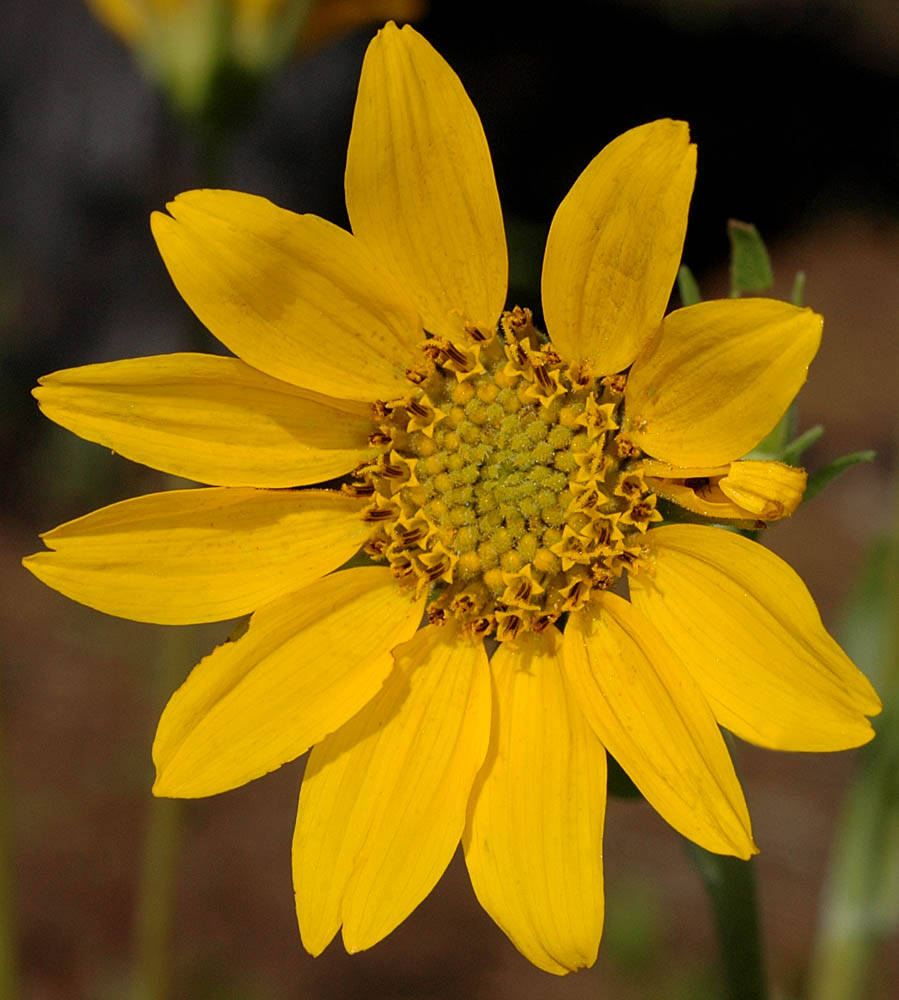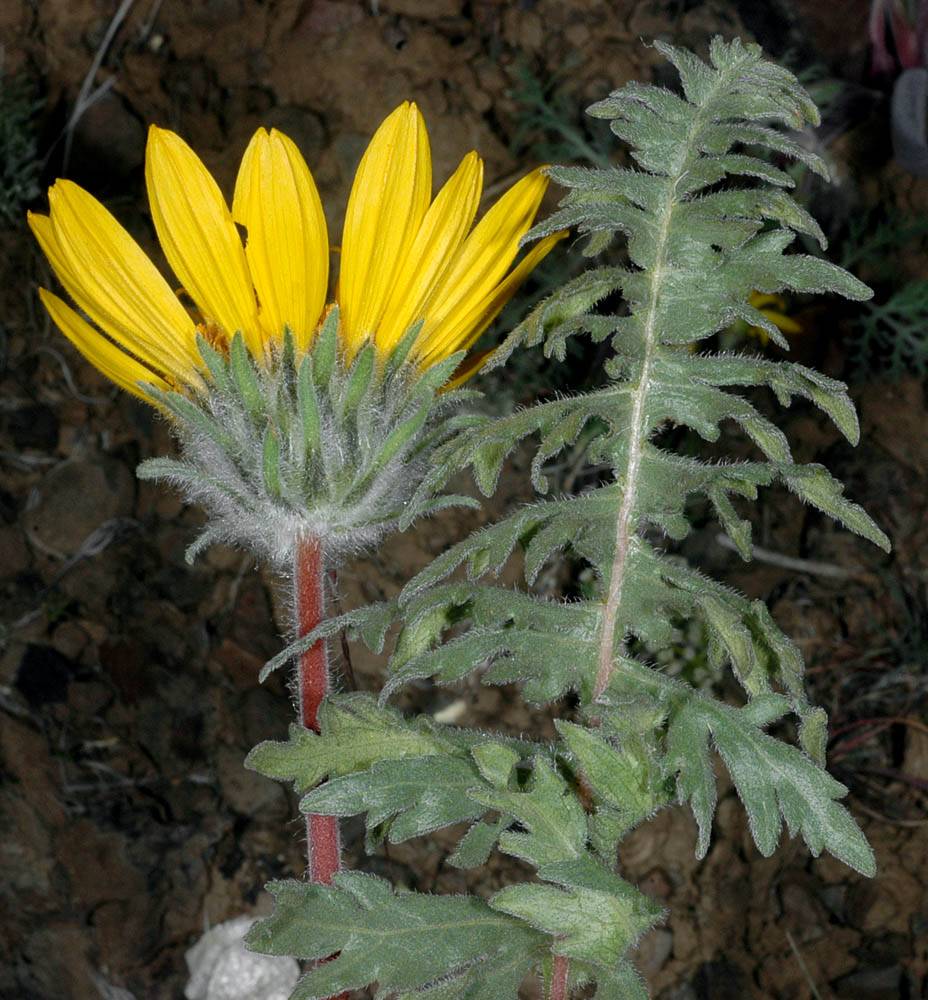Balsamorhiza
Balsamorhiza hookeri
(synonym of Balsamorhiza hirsuta)
balsamroot
Hooker's balsamroot
erect, scapose, unbranched.
11–47 cm; hirsute; from single taproot.
mainly basal; simple or pinnately compound, lanceolate to ovate;
cauline opposite, sometimes 1 additional pair of reduced cauline leaves alternate.
lanceolate to ovate-lanceolate, 1-pinnately divided with some pinnae toothed or lobed to 3-pinnately lobed;
margins entire to crenate or serrate;
surfaces hirsute to hirsute-sericeous;
basal leaves in 1–few rosettes;
blades 12–24 × 4–12 cm;
pinnae 1–10 mm wide;
petioles 4–15 cm;
cauline blades 3–14.5 × 0.6–4 cm;
petioles 4–11 cm.
with 1 main head, occasionally with up to 6 axillary heads per stem.
with 1 terminal head.
broadly campanulate to hemispheric.
8–15 × 15–25 mm.
flat to convex, paleate.
pistillate;
corollas yellow or rarely pink to red.
deciduous, 10–17, yellow;
rays 15–30 × 4–7 mm.
bisexual;
corollas yellow, 5-lobed.
~6 mm.
in 2–4 series; outer equaling or surpassing inner.
linear-lanceolate to ovate, 13–20 × 3–6 mm, with or without long-acuminate tips, villous-hirsute and ciliate, sometimes glabrous proximally.
4-sided; black, glabrous or strigillose;
pappi 0.
6.5 × 1.5 mm, glabrous.
radiate.
lanceolate; acute, folded around fruits.
11–12 mm.
=38.
Balsamorhiza
Balsamorhiza hookeri
Western Canada and United States. 12 species; 10 species treated in Flora.
Balsamorhiza is most closely related to Wyethia, from which it is distinguished by being scapose. Balsamorhiza is divided into two sections, both of which occur in Oregon. Section Artorhiza has cordate or sagittate, simple leaves; a taproot bearing multiple crowns; alternate stem leaves above the pair of opposite leaves; and often multiple heads per stem. Section Balsamorhiza has generally pinnately divided leaves (often simple in B. serrata); taproots bearing one or at most two crowns; one pair of opposite stem leaves; and a solitary head per stem. All species of Oregon Balsamorhiza have a chromosome number of n=19 and hybridize when they come together except for the polyploid B. macrophylla. Intersectional hybridization merely produces hybrid swarms, while intrasectional hybridization tends to produce widespread clines, leading to taxonomic confusion. Hybrid swarms are easily distinguished in the field by the wide variation in leaf division and pubescence within a given population. In the herbarium, when only one plant per population is present, hybrids are best distinguished by possessing leaves that are not as deeply divided as would be expected for the most similar-looking member of section Balsamorhiza, or by plants with pinnately divided leaves having either multiple heads per stem or alternate, in addition to opposite, stem leaves. Widths of heads are those of pressed specimens. Widths of pinnae are the width of full-sized pinnae from the middle of a fully developed leaf at their widest point (not including any lobes that may be present).
Dry, open, often rocky areas. Flowering Apr–Jun. 1000–1600 m. BR, BW. CA, ID, NV, WA; southeast to UT. Native.
As treated here, B. hookeri consists of the members of section Balsamorhiza that are left over after the entities that are distinct in at least some parts of their ranges are removed. Balsamorhiza hookeri hybridizes with B. hispidula and B. sagittata. The species is named after the British botanist William Jackson Hooker, who initially described it as Heliopsis balsamorhiza and tentatively proposed (but did not validly publish, as he did not accept it) the genus Balsamorhiza under the supposition that it would prove to be distinct from Heliopsis once better material was collected.
Abigail (Abby) Moore




